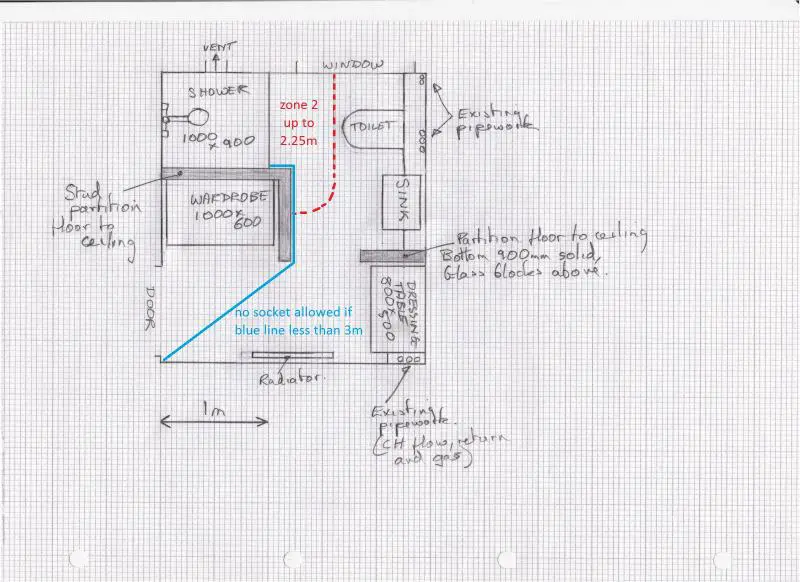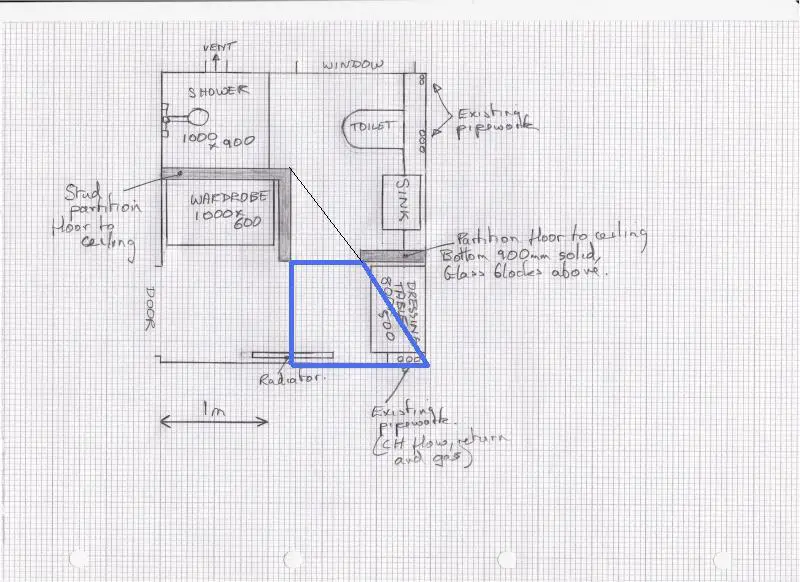Yes, that's all true. My comments about the way in which a 'door-sized gap' being taken to extremes was really to support my belief that those who wrote the regs had in mind the fact that a door was what defined 'a separate room'. As you say, it might not be any worse than a socket on a landing (or even at the other end of the house, if one had a long extension lead!), but I think the temptation to plug in a hair-dryer etc., or even a fan heater (for use in the bathroom proper), would probably be greater if the socket were in the room (or even a 'sub-room'!).I take JohnW2's point that the definition of a "gap" in partitioning could be taken to ridiculous extremes but, as he also says later, doors can be left open and, for instance, a socket in a hallway or landing might then be well within the 3m limit. Let's face it, for many new-build houses these days 3m in any direction would take you well into your neighbour's property....
Are you definitely against the idea of a pull-switch? Regs aside, I would personally think there would be a significant risk of someone operating that switch with wet hands (far more so than if it were on the landing, before you raise that point!), and it also could possibly end up covered in condensation, so I would personally probably want a pull switch.As to the fittings I would like to install... First, I'd like the light switch (NOT a pull-cord variety) to be just inside the main door. Is that likely to be permitted given the layout of the room (image coming shortly)?
I think that I and others are agreed that, without a door, you'd be stuck with the 3m minimum for sockets. Also, as above, even forgetting the regs (and even if there were a door, which could be left open) I would personally be hesitant to tempt people to plug in things that could then be used in the 'main body' of the bathroom, particularly if there were a possibility of 'outsiders' (i.e. non-household members) ever using the room - but maybe I'm just over-cautious!And yes, the intention would be to install a socket in one corner of the cloakroom approximately 800mm on the cloakroom side of the gap in the partition. It sounds as though that would definitely not be permitted unless the gap in the partition actually had a door, and even then might not be a good idea?
Kind Regards, John




